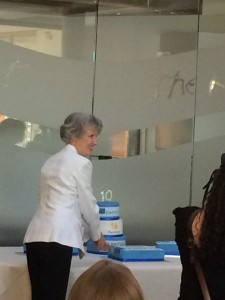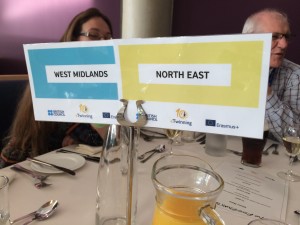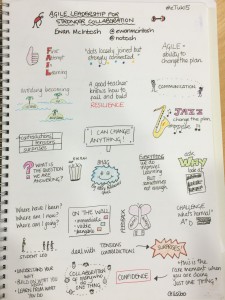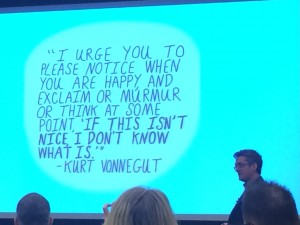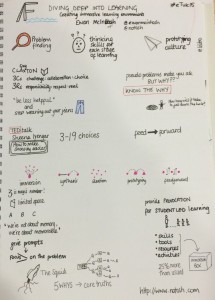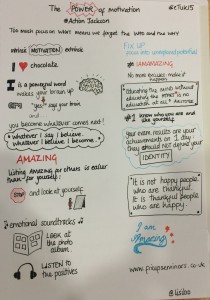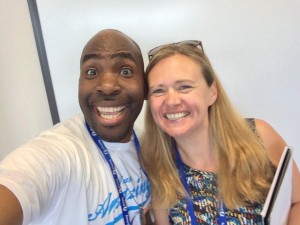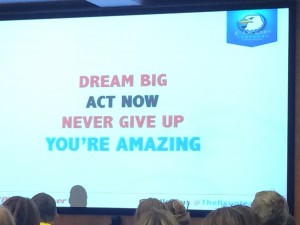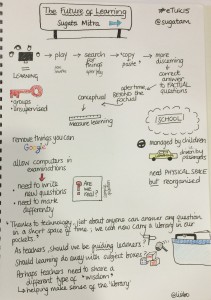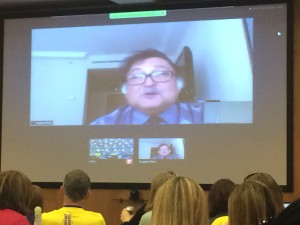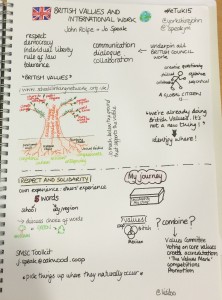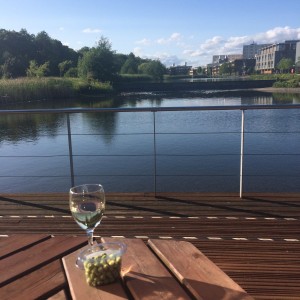Supporting learners’ understanding and enjoyment of stories in the primary languages classroom. #LW2019
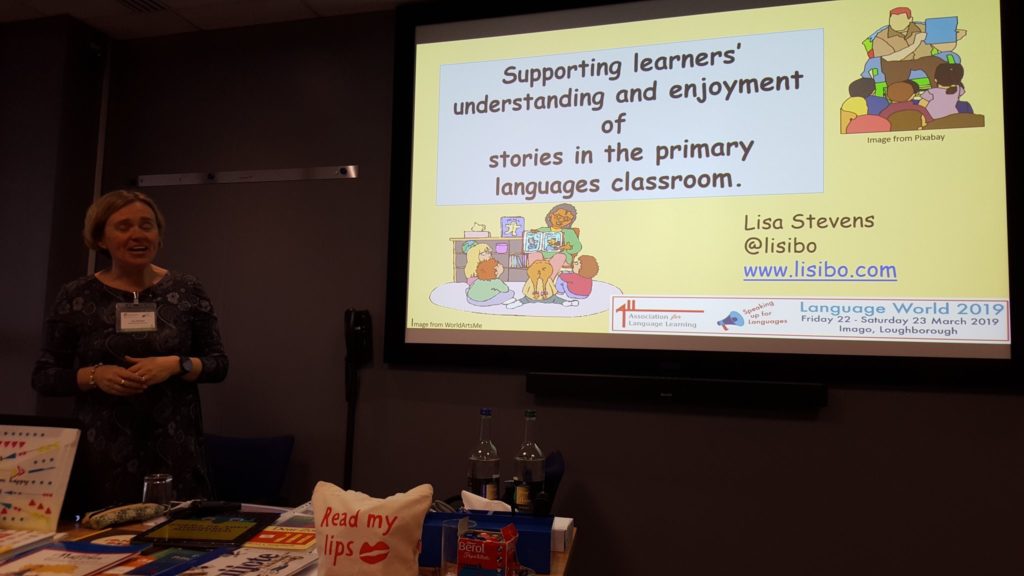
It seems a long time since Language World 2019 (it is three weeks I guess) so I apologise for the delay in uploading my presentation here; I’ve had a few website issues.
However, here it is, and below are some notes that you may find helpful in recalling what I said, or trying to decipher the slides! You’ll also find below Clare Seccombe’s lovely sketchnote of the session which summarises what I said as well!
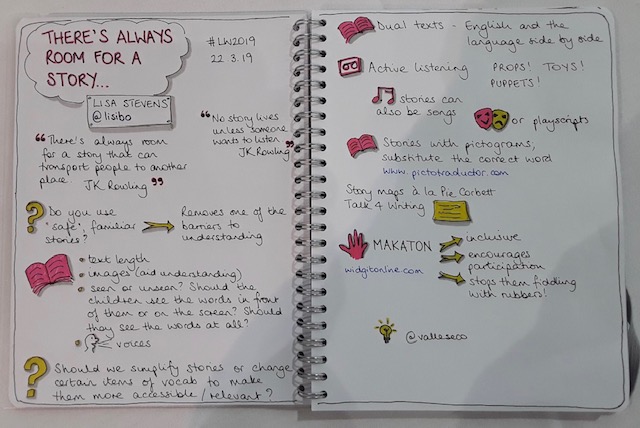
Links on Pinterest that accompany this presentation : https://www.pinterest.co.uk/lisibo/supporting-storytelling-lw2019/
La Belle au Bois Dormant resources from Bernadette Clinton
A post I wrote related to using Pictogramas – Leyendo con Pictogramas
Examples of stories and poems in pictograms – Coleccíon de Cuentos con Pictogramas and also Super colección de cuentos realizados con pictogramas Y ACTIVIDADES
Pictocuentos
Pictotraductor
Pictoaplicaciones
Unfortunately I haven’t managed to find an equivalent for French or German.
WidgetOnline is a subscription website that allows you to make visual stories similar to the Pictoaplicaciones suite but in English, or other languages with an add on pack.
I wanted to share more about using Makaton and to highlight that there are a number of free as well as reasonably priced resource packs that can be downloaded from Makaton.org
I got the materials to accompany my retelling of Dear Zoo/ Querido Zoo from there and then translated them/applied them to the Spanish story.
And there’s an article on Using Makaton in Storytelling that you might find interesting.
Ten in the Bed songs :
In Spanish – Diez en la cama
In French – Dix au lit
In German – Zehn im Bett
Download the Makaton signs here to accompany the story/song
And watch the story told in English and Makaton by Rob Delaney below:
Finally, I had a pile of books to share but completely forgot with the pressure of time so here are screenshots from a couple. Firstly, Don Quijote de la Mancha which has the 2 USPs of being an authentic Spanish text, and also being written in Spanish ‘handwriting’, and El Pájaro, el Monoy la Serpiente en la Selva which is a charming story about living and working together.
If you have any comments or questions, please leave them below, or you can contact me via social media!
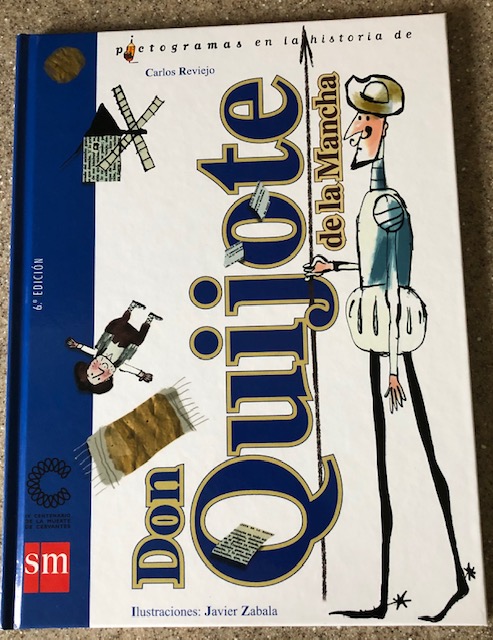
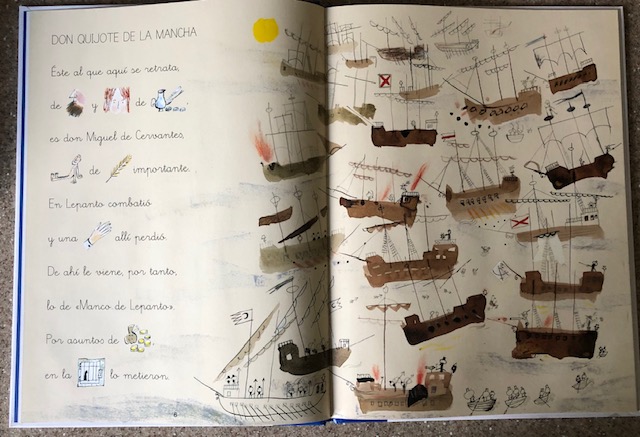
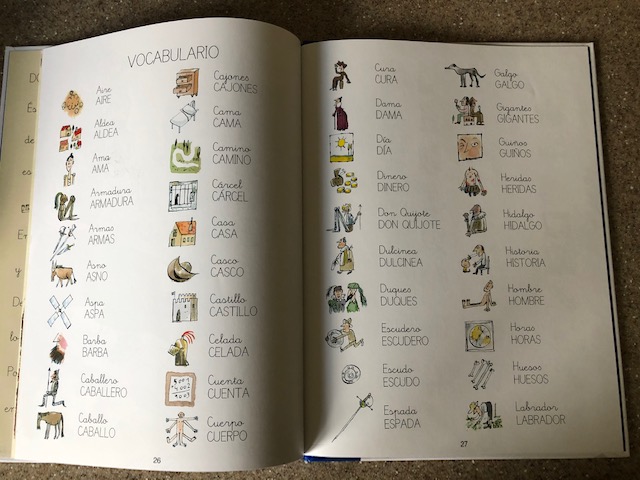

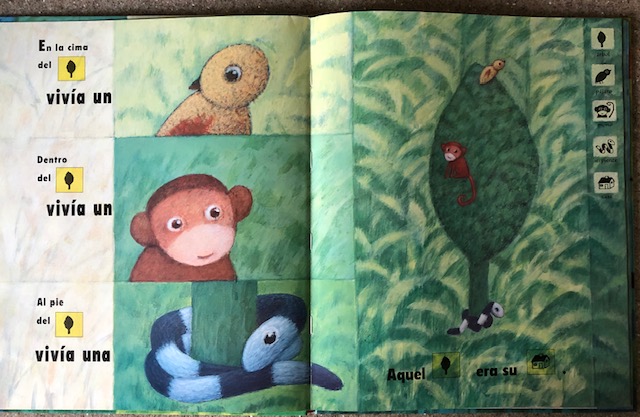
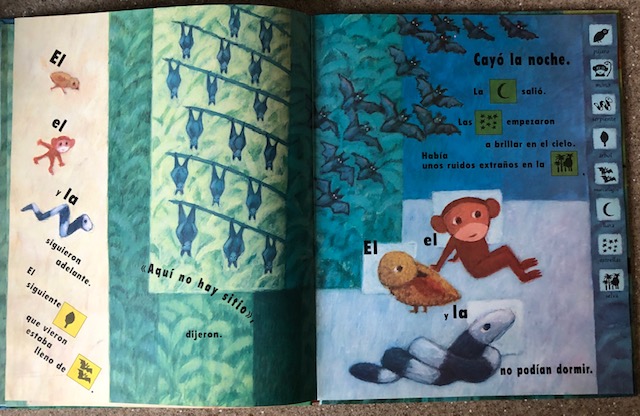

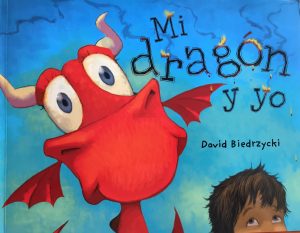 On my trip to London on Tuesday I paid a flying visit to the fourth floor of Foyles where all the language books are found. Although I was limited in the time I could spend there – 25 minutes! – and I imposed a spending limit on myself too, I still managed to come away with a couple of books.
On my trip to London on Tuesday I paid a flying visit to the fourth floor of Foyles where all the language books are found. Although I was limited in the time I could spend there – 25 minutes! – and I imposed a spending limit on myself too, I still managed to come away with a couple of books.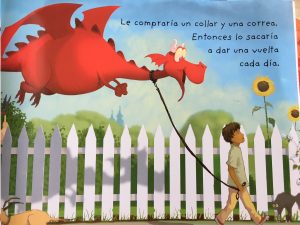
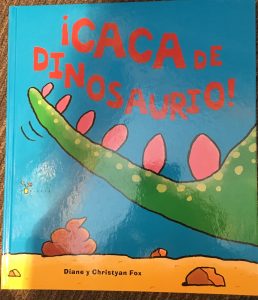
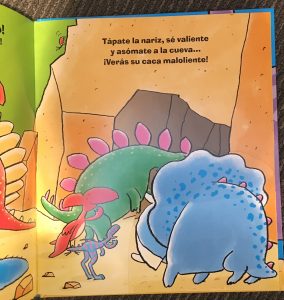

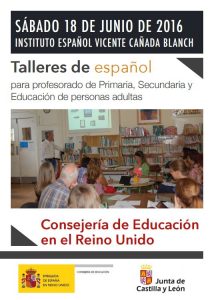
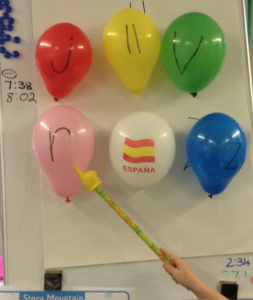
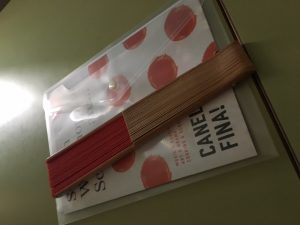
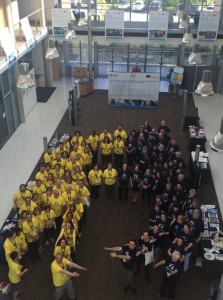

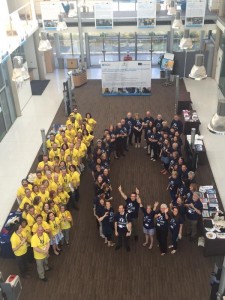
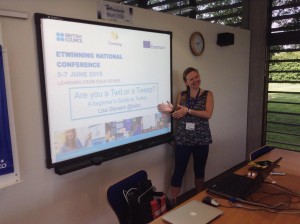 I spoke once more about Twitter – Are you a Twit or a Tweep? You can see my presentation here –
I spoke once more about Twitter – Are you a Twit or a Tweep? You can see my presentation here – 